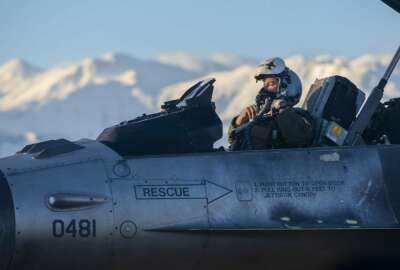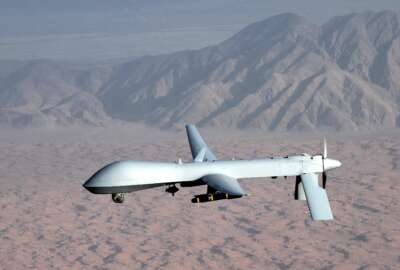
Air Force, Army strategy flies too low on drone pilot shortage
The Government Accountability Office stated the two services did not implement human capital strategies that could have helped alleviate the drone pilot short fall.
The Air Force and Army are itching for more people to fly drones, but a new report found the services failed to fully apply strategies that could have helped alleviate the pilot shortage.
A Government Accountability Office report released Jan. 31 concluded the Air Force and Army are impeding their own progress by halfheartedly using proper human capital planning.
While both services developed strategies to address shortfalls in training and staffing, neither are looking into the future in the way they are allocating and hiring the pilots.
Most notably, the Air Force and Army did not evaluate the option of mixing federal civilians in with military personnel for some drone activities.
While the services spend money hiring contractors to fly drones, they have not fully assessed the option of using federal civilians, even though they may cost less.
“Evaluating the workforce mix would help to ensure that the Air Force and the Army are using the mix of personnel best suited to meeting mission needs and would provide information on options for addressing shortages and limitations on using military personnel. In addition, the Air Force and Army did not inform their workforce decisions with cost analyses that would provide information on the most cost-effective workforce for meeting mission needs,” the study stated.
In a response to the report the Defense Department agreed the Air Force and Army need to evaluate workforce mix.
Still, the Air Force is not finding long-term hiring solutions for its drone shortage.
The Air Force still relies on airmen temporarily reassigned to fly unmanned aircraft systems.
As of March 2016, 37 percent of the personnel filling drone pilot positions were temporarily assigned manned-aircraft pilots. That’s more than any other Air Force career field.
The Air Force is at least 200 pilots short of what it believes it needs to meet its missions for remotely-piloted aircraft, but it’s only gotten there by “borrowing” pilots from manned aircraft communities. Those fighter aircraft, such as the F-16 and F-15, are at least 500 pilots short today, and the Air Force projects a 700-pilot shortage within the next few years.
DoD partially agreed with GAO that it should revise its plan in the way it uses temporary assignments. DoD stated it does not disagree there is a problem, but thinks its current plan is addressing the issue.
The Army still hasn’t found more facilities for drone pilots to work out of and has not solved the problem of access to airspace. The result is considerable training shortfalls for pilots.
The study found the Army’s planning had even more holes when it did not even take into account drone pilot’s input when developing a strategy to address training shortfalls.
“Without soliciting input directly from UAS pilots in UAS units, such as by conducting focus groups or surveys, the Army is not able to capture and incorporate the unique perspective of employees who are conducting the day-to-day work of serving as UAS pilots. Had it done so the Army may have been able to identify any challenges that these pilots might face in completing their training or in avoiding mishaps,” the study stated.
DoD stated it thinks it’s current plan will work, but agrees pilot feedback would be beneficial and will welcome it in the future.
Copyright © 2025 Federal News Network. All rights reserved. This website is not intended for users located within the European Economic Area.
Scott Maucione is a defense reporter for Federal News Network and reports on human capital, workforce and the Defense Department at-large.
Follow @smaucioneWFED




